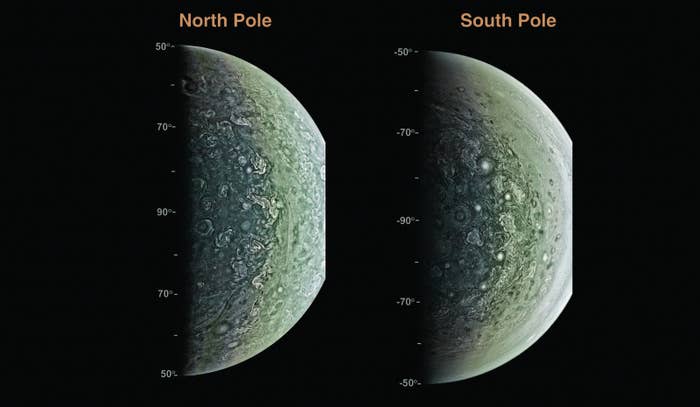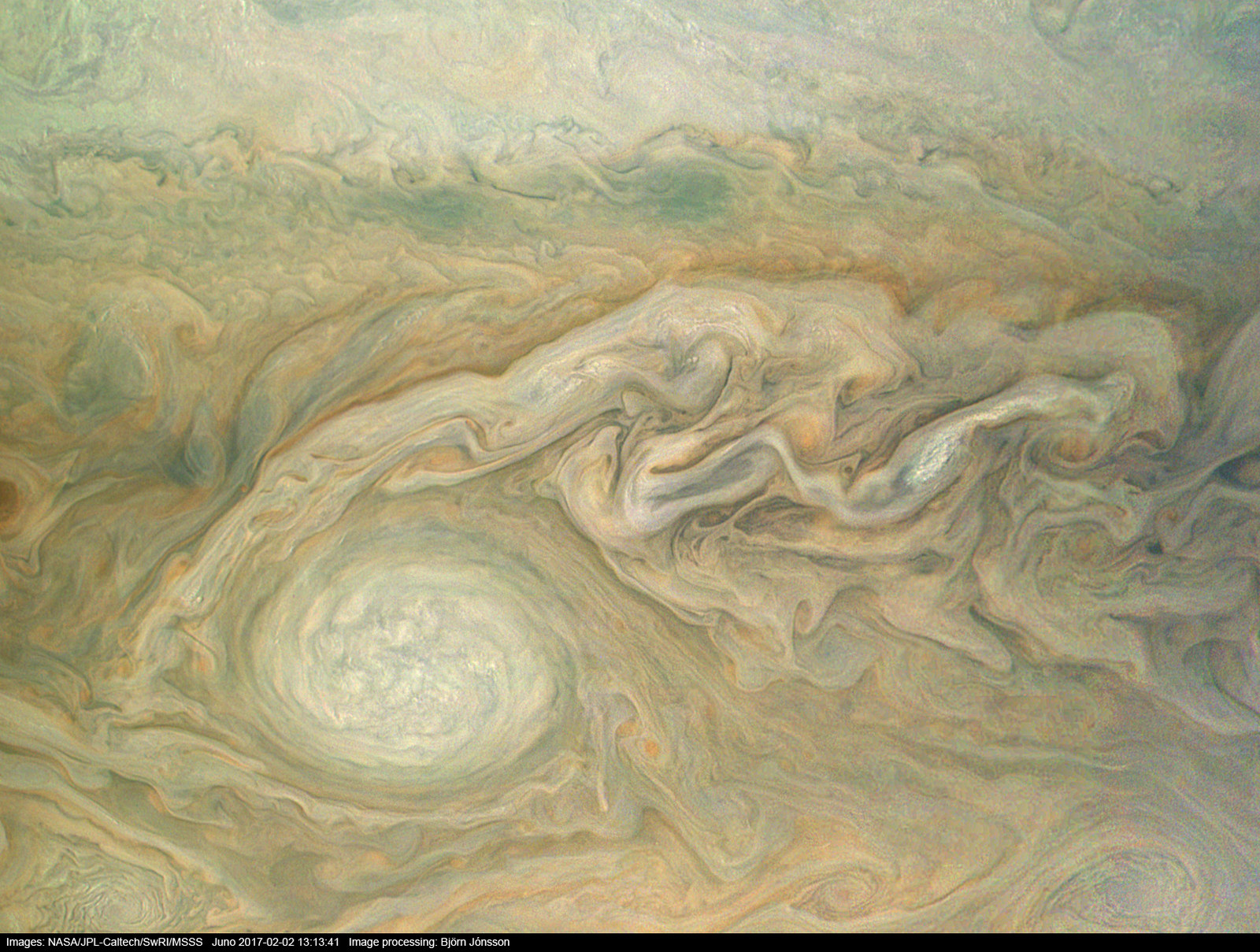Scientists have just published the first results from NASA's Juno spacecraft, which reached Jupiter last July. Juno made its first close pass of Jupiter on 27 August last year, and two papers out today in the journal Science detail what we've learned so far from the mission.
When Juno flew above the clouds, it saw "a chaotic scene" at Jupiter's poles, according to the first paper's authors. Time-lapse images show oval-shaped features at the poles, which are cyclones, some as large as 1,400 kilometres across. And thermal data also showed that there may be an ammonia-based weather system in Jupiter's atmosphere.
Before it got up close and personal with the planet, Juno entered Jupiter's magnetosphere – the region where the gas giant's magnetic field dominates over the sun's magnetic influence – in June last year.
The second paper shows that Juno documented huge aurorae in ultraviolet and infrared images of Jupiter's poles – like the northern lights we get on Earth.

Close to the planet, Juno discovered that Jupiter's gravitational field is 10 times greater Earth's magnetic field, and higher than scientists expected it to be. The magnetic field data being gathered by Juno could help scientists figure out whether or not Jupiter has a solid core – something scientists have long suspected but not confirmed due to the swirling clouds that surround the planet.
Early results are "suggestive" of a solid core, according to more research by the Juno team published simultaneously in the journal Geophysical Research Letters, but more passes are needed to be sure. "Fortunately," the paper says, "the Juno mission is designed to do just that."

Juno reached Jupiter after a five-year, 1.7-billion-mile journey. It will complete 36 flybys of Jupiter in total.
Among other things, scientists hope the mission will help them figure out more about Jupiter's internal structure and the planet's atmosphere, including how much water it contains.
Since it arrived it's sent back some new photos of Jupiter in greater detail than we've ever seen before. You can see the most recent images from Juno at the mission's website. The mission is scheduled to end in February 2018.

